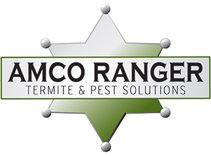Eliminate Pantry Pests
Packaged foods in your pantry can attract pests such as moths, weevils, and small beetles. The good news is that although annoying, they are not dangerous; they won’t bite or sting you or damage your home. Getting rid of these pests is not hard, but it does take time.
Where do they come from?
These unwelcome guests can be found in even the most spotless home. Pests often hitch a ride in your food at the grocery store, during delivery, or at the processing plant or warehouse.
What foods attract pests?
Nearly any dried food that is stored at room temperature can be a draw, such as grains, cereals, beans, dried fruits, nuts, and spices. Open packages that aren’t sealed well are prime targets, because they allow easy entry. However, many insects can chew their way into unopened packages as well.
There’s a bug in my flour.
If you find a bug in a product, throw the entire package away and check the food stored near it. If you don’t spot anything in the other packages or elsewhere in the pantry, the bug was probably an isolated incident, and the other foods are fine to keep. If you want to be extra-cautious, freeze any potentially affected products for three to four days. This will kill any eggs or insects.
The bugs are everywhere.
If you find insects in multiple places, empty your pantry completely and vacuum the shelves, floor, and corners, then wash everything with soapy water. Do not apply bleach, ammonia or pesticides – these chemicals won’t prevent a future infestation and can be dangerous if they come in contact with food. Before returning food to the pantry, thoroughly check that each package is undamaged and uncontaminated.
Keep the bugs out.
The longer a product sits in your pantry, the more likely it is to become infested, so buy small packages you can use in two to four months. Avoid buying packages that have dents, holes or scratches, and follow the “first in, first out” rule when using food. It’s also helpful to transfer grains, cereals, etc. into glass, metal, or sturdy plastic containers with airtight lids. These containers keep insects out much better than cardboard, paper, or foil. Thoroughly clean your pantry every three to six months, which will help you stay organized and keep pests at bay.
Ewww! I think I ate a bug.
If you’ve just enjoyed a nice meal and spot a critter in your pasta package, don’t worry. Pantry pests aren’t poisonous, and accidentally ingesting a bug won’t hurt you.
